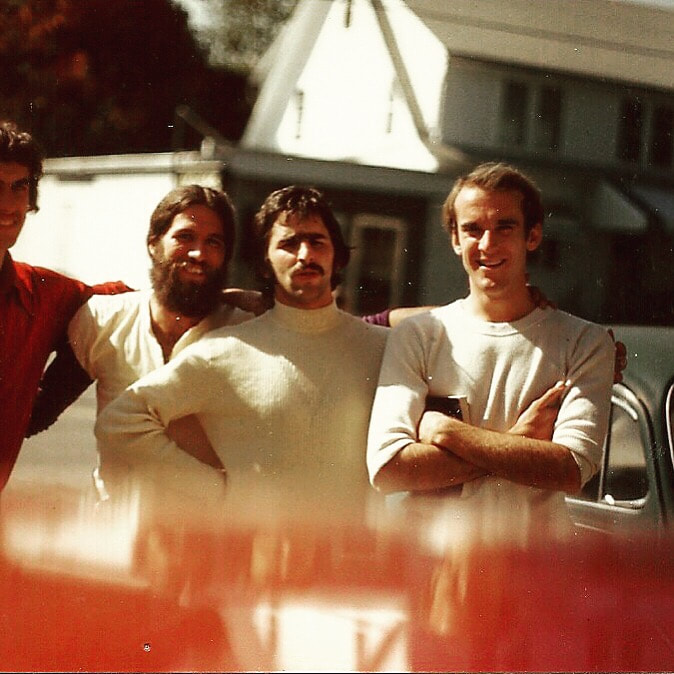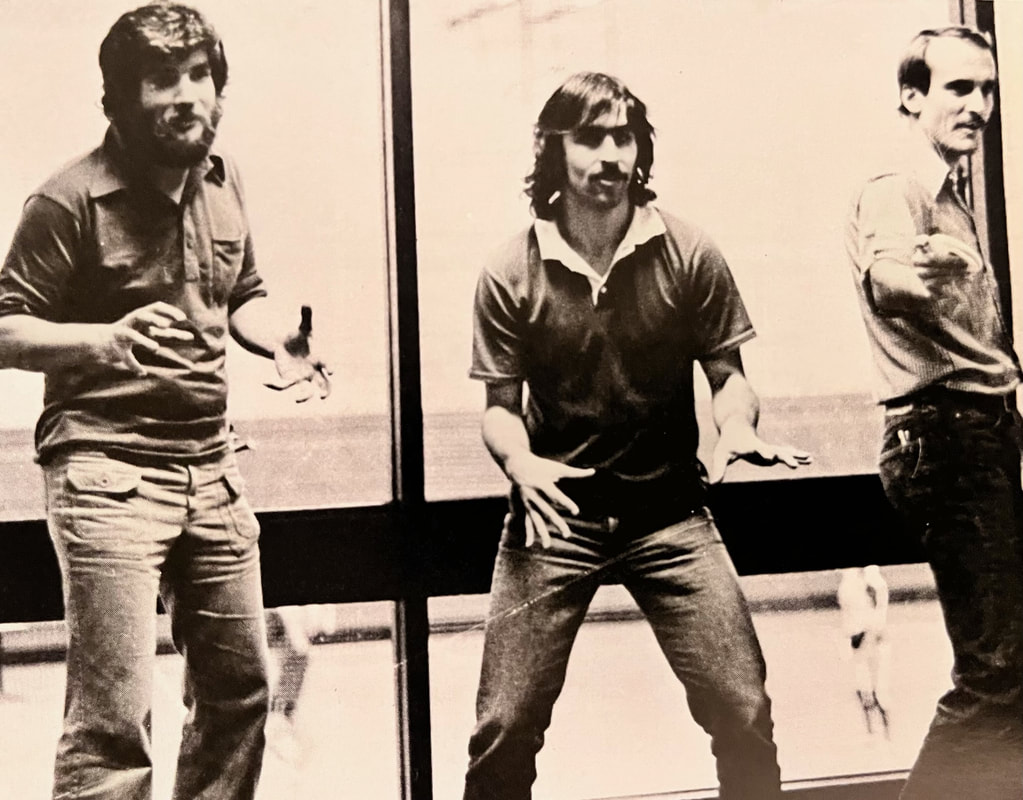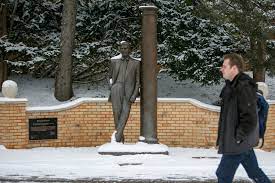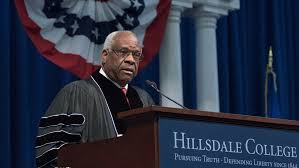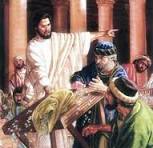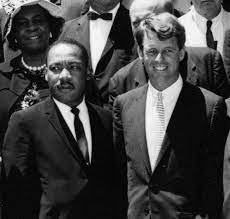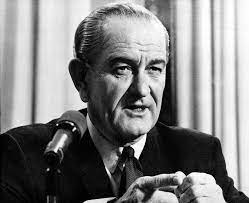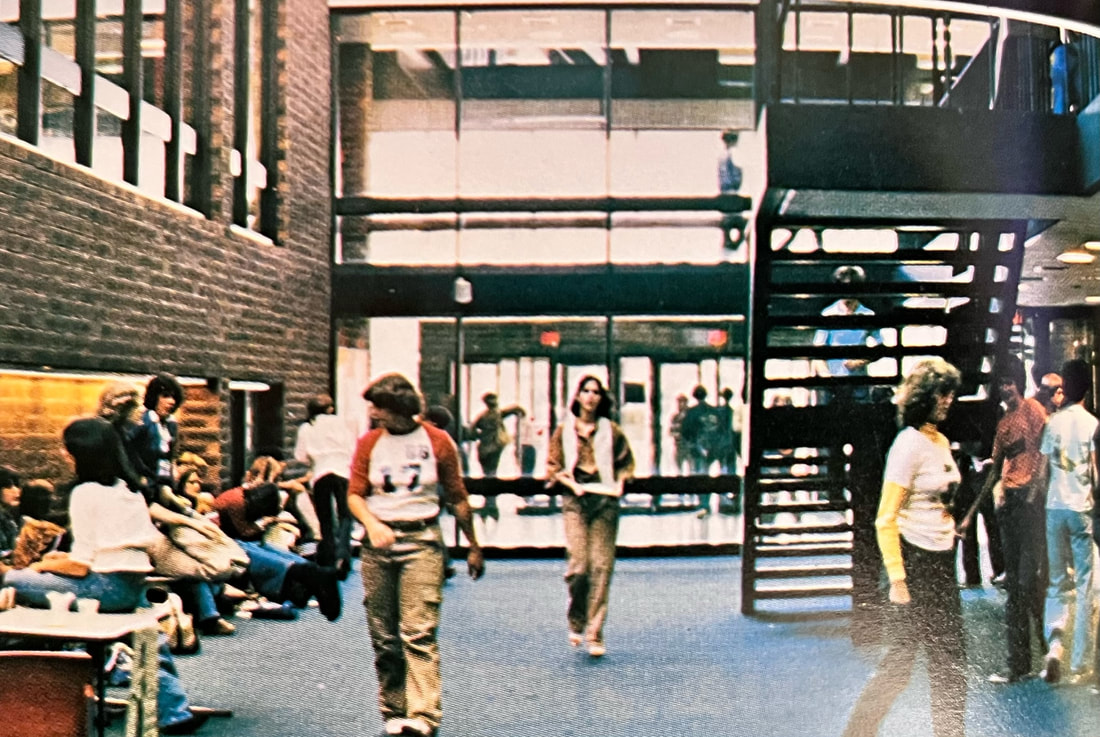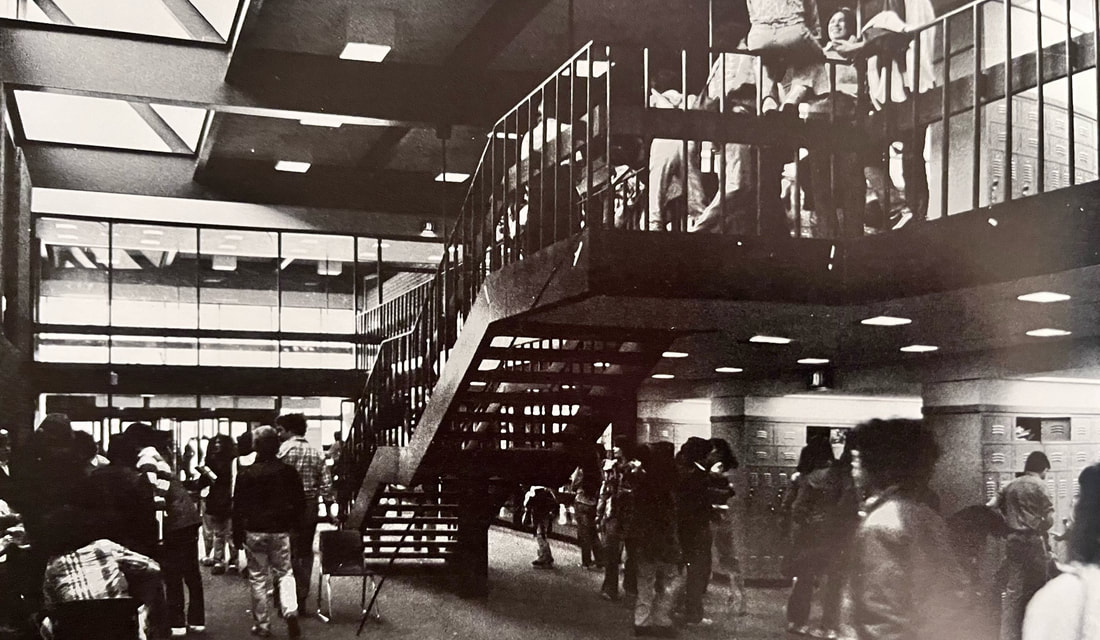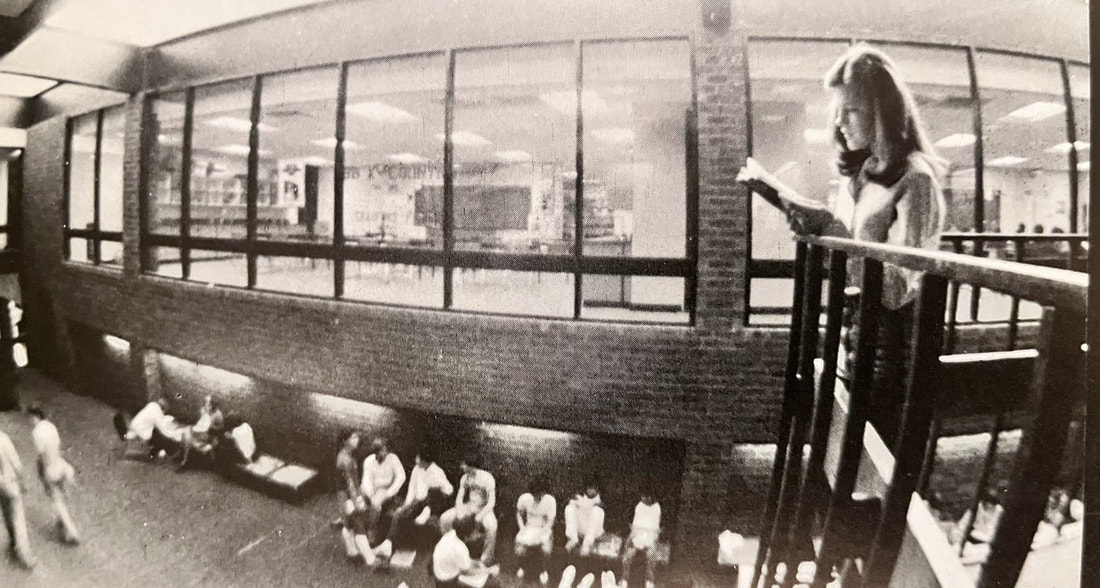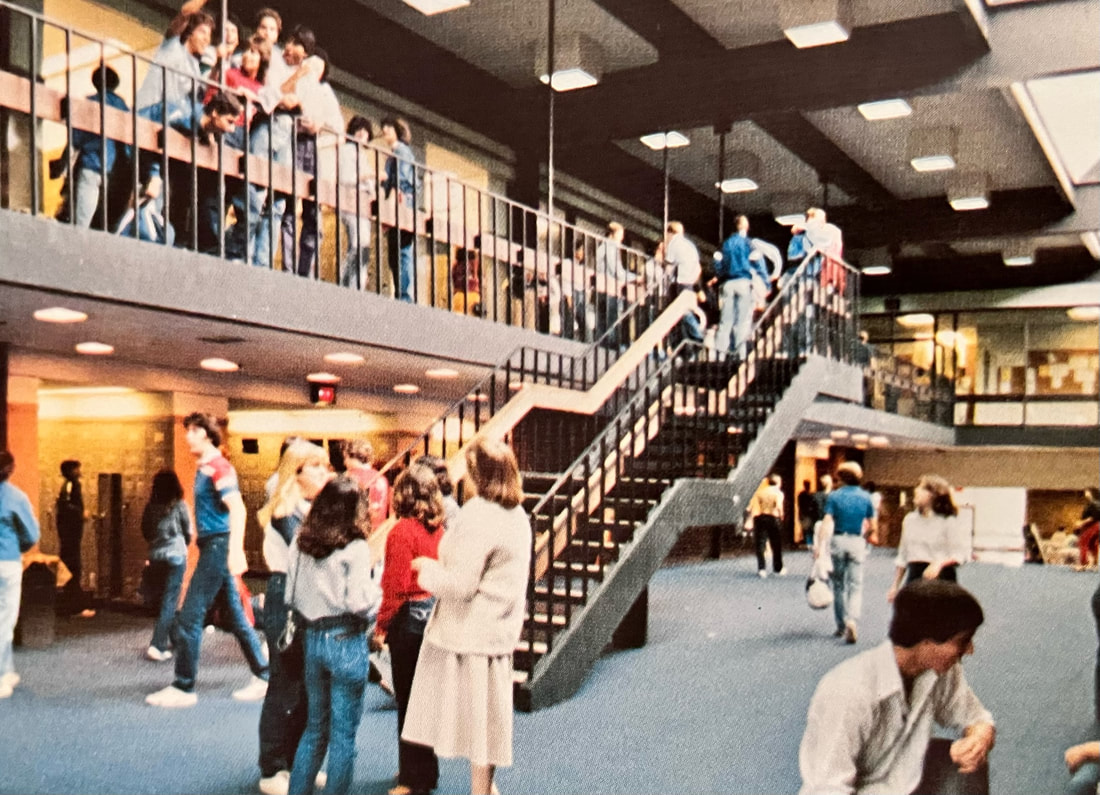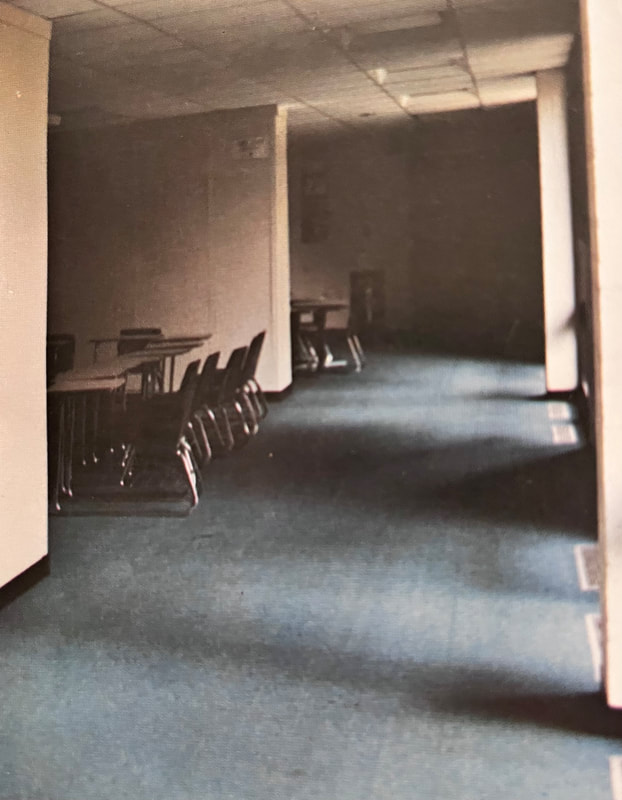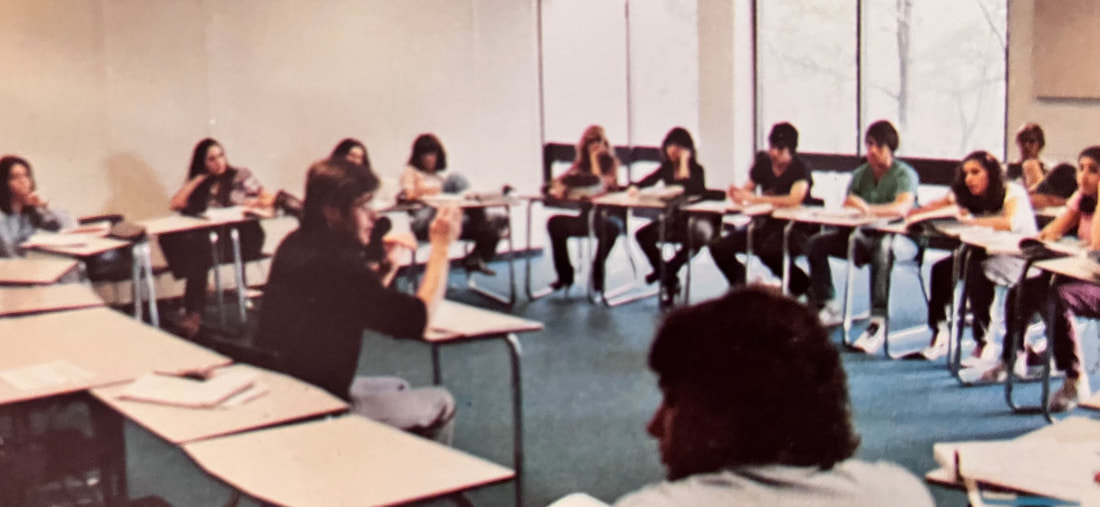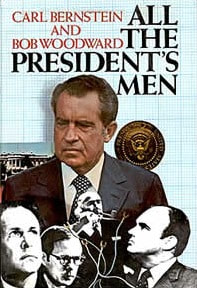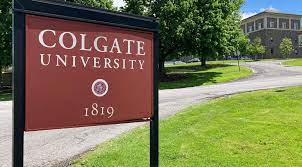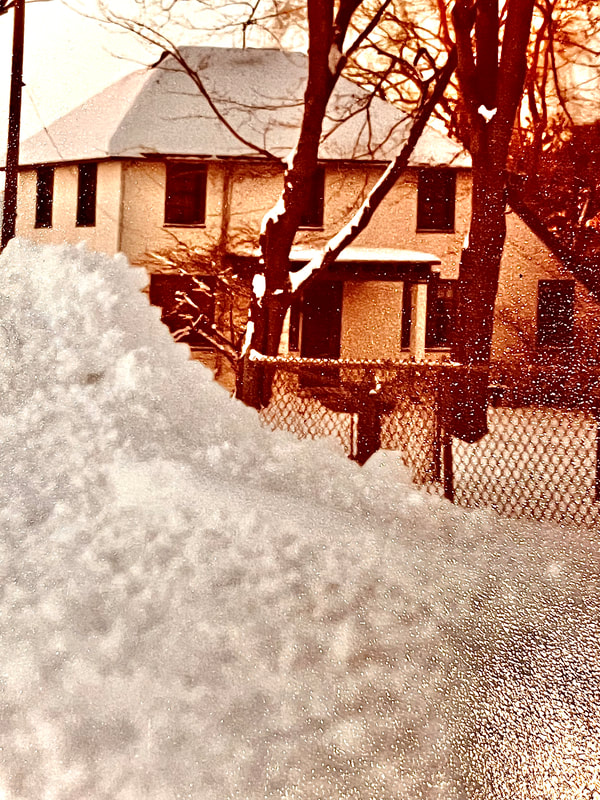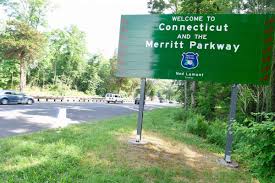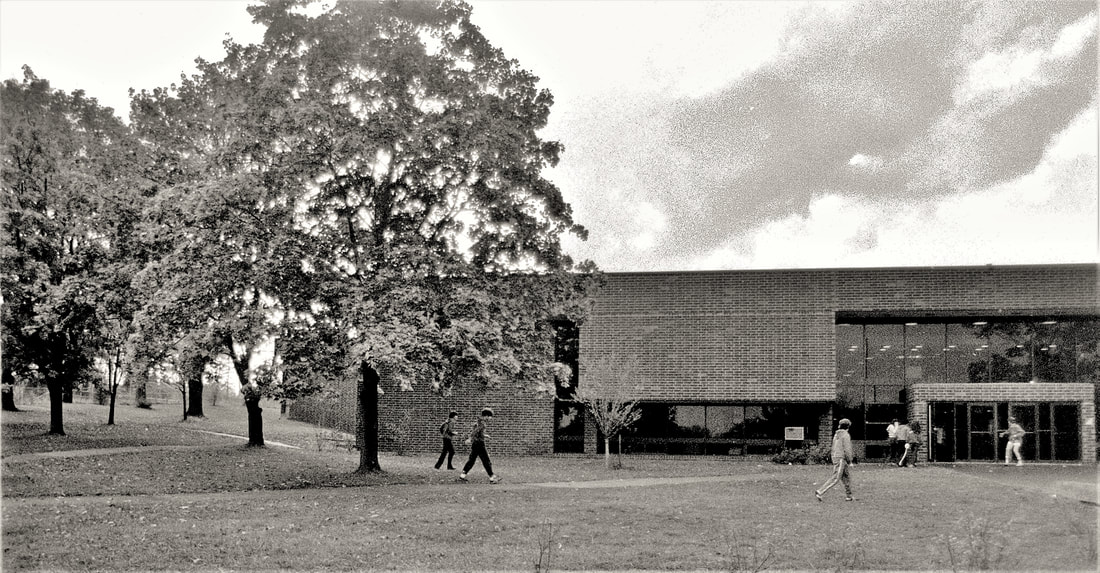|
Mr. Petes & The Moment
A particular highlight of the first year at Blind Brook Jr./Sr. High School (1973-74) was developing a friendship with Peter Tarshis. One of the most brilliantly creative people I have ever known, Peter had recently graduated from Union College in upstate New York and was living around the corner from me in Rye Brook, where his Mom was the Health/Sex Ed. Teacher in the district. While figuring out his future, Peter (“Mr. Petes”) began substituting at Blind Brook and we quickly became fast friends, based on our mutual love for New York sports (the Knicks & Yankees), the arts (theater, film, cartooning, et al) and our left-handedness. During that first year at Blind Brook, we spent countless hours going into New York City --- to Madison Square Garden, to Yankee Stadium, to the theater. Peter introduced me to the Wooster Group, the Ontological Hysterical Theater, Andre Gregory’s fabulous experimental production of Alice in Wonderland, and, most significantly, Sam Shepard’s early works (The Tooth of Crime, Cowboy Mouth). Because he was substituting so frequently, we found ourselves working and “playing” together all the time --- and it was a blast! I knew I’d be working at Colgate in the summer of 1974 (as a “Graduate Student Liaison & Video Supervisor”) and encouraged Peter to apply to the program. The way I saw it, he could get his certification (and a master’s degree) in a year and then a full-time job at Blind Brook (we had no doubt David Schein would hire him --- he was a natural in the classroom). We could then continue our adventures in and around New York City --- what could be better? And, in fact, that’s what happened. Peter got into Colgate, did a teaching internship at Eastern Middle School in Greenwich, Connecticut, one semester (so we got to continue hanging out) and, by the fall of 1975, began teaching at Blind Brook as a full time English/Drama teacher. An interesting sidebar involves that summer in Colgate, 1974. In Peter’s cohort were several notable people. A former schoolmate of Peter’s at Union, Jamie Jacobs --- a brilliant math/science scholar and gymnast, was in the group, as was Del Shortliffe, a newly minted Morehouse Scholar graduate of the University of North Carolina. The four of us quickly became inseparable on the Colgate campus that summer (and in and around the town of Hamilton --- where Del’s aunt lived!), forging friendships that have withstood the test of time. The plan that Peter and I had idealistically hatched during his substitute year came to fruition in the fall of 1975 with Peter becoming a full time English and Drama teacher at BBHS. A side note: David Schein wanted to hire Del, too, but felt he couldn’t hire two English teachers from Colgate at the same time, as he had already hired me, Roger Smith, Mike Nyhan, and Bill Metzler (a math teacher who was in Peter’s cohort) --- worrying that people would think he had some kind of kickback deal with Colgate. Del, of course, was hired in 1977, as soon as another English position opened up --- but that’s a story for another time. Peter Tarshis’s impact on Blind Brook Jr./Sr. High School in that first decade was incalculable. His development of the drama program --- as well as his work with George Trautwein’s wonderful musical productions --- was stunning. I’m not sure if Peter was ever aware of how much his enthusiasm for dramatic theater and his ability to translate that into brilliant teaching effected not only his students but also his colleagues. As a result of working with (and learning from) Peter, I had no qualms about taking on producing and directing school plays when I taught in Winchester and Bronxville. After a decade at Blind Brook, Peter was looking to move beyond teaching high school, professionally, and in 1986 he directed a music video that won the MTV Basement Tapes contest (for “Boys” by the Triplets) which included the group getting a contract with Elektra Records. Shortly after, Peter left BBHS, beginning a very successful career as an Emmy winning producer and executive vice-president at the A & E Network. Nonetheless, like any great teacher, Peter’s influence is still felt by the students he worked with at Blind Brook. As I’ve been compiling stories about the first decade of our unusual “no-walls” progressive school, I received the following narrative from Marc Ackerman, Class of 1985. I believe it speaks to how special Blind Brook --- and particularly Peter’s work there --- was. The Blind Brook Moment I consider my years in BBHS (1981-1985) to be the late stage of its “golden era.” The more progressive ‘70’s had yielded to the more conservative ‘80’s, with Dave Schein no longer roaming the halls and Ronald Reagan leading the country. There was even talk about building walls in classrooms and restricting the school’s open campus. The walls were literally closing in. But fortunately, my classmates and I were still able to experience that unique BB magic. Del Shortliffe took an expansive view of the English curriculum, taking time in class to introduce us to the jazz stylings of Charlie “Bird” Parker’s and the avant garde prog rock of David Byrne and the Talking Heads. Zach Charon taught us how to make tofu in Physics, which I’m sure made perfect sense at the time. We made our own video games in computer class with Dave Press, whose corny jokes masked that he was teaching us valuable problem-solving skills and what we now known as coding. Gary Cialfi, that intimidating, and irascible, but ultimately kind and goofy music director, whipped us into mastering the classics in concert band, and then encouraged us to put aside our scores and explore the vague wonders of improvising solos in jazz band. The band and choir traveled to Italy to learn more about the world and ourselves. And, ultimately, the campus remained open and free periods were genuinely free, giving us the ability to make some choices we’d regret and some we’d be proud of, but all of which helped us understand ourselves better. For me, the real magic happened every spring when I opened the doors to that small black, rectangular studio we called the LGI (Large Group Instruction Room), and began rehearsals for the spring play with Pete Tarshis. I can still hear Pete’s laugh during auditions. He’d throw out a few random words and ask you to improvise a monologue using them–a near impossible task for an awkward teenager that Pete would make easier by laughing heartily at any choice you’d make. And then rehearsals would start, and we’d create entire worlds within those LGI walls. Pete would ask us to imagine our characters’ lives beyond the script and stage directions, asking us as we lay on the stage in a semi-meditative state: What does your character’s room look like? What objects are there? How does your character feel when you see those objects? Then we’d slowly rise and walk around the stage and do our best to adopt our character’s physicalities. How do they walk? How do they sit or stand? How do they smile or frown? We did this every day and it never felt repetitive or unnecessary. Pete somehow kept it fresh and important, and encouraged any choice we made. Pete’s approach to directing was not to dictate to his actors, but to provide them the tools to make their own choices. We somehow knew that none of our choices were wrong–they were simply ours. How about that for a life lesson? I couldn’t wait to get to the LGI every day for rehearsal, and I hated to leave. It was not unusual for cast members to arrive early or linger at the end just to soak in a few more minutes together. Which is why there were always mixed emotions when it came time for the performances. We were excited to share our work with family and friends, but we knew it would be over soon. Pete sensed this, and in his perfectly understated way prepared us for it. The day of each opening performance, he told us: You’ve got a lot going through your heads right now–lines, blocking, costumes, homework and more. But don’t pass up the opportunity to remember a moment. That moment is the one when the lights are down, the play is about to begin and you’re ready to make your first entrance. In that moment, take stock of how you are feeling. Feel the nervousness, the excitement, the anticipation, and the fear. Remember the work you’ve put in to get you to that moment and feel proud. Really drink in that feeling and connect to it. There is nothing like it. To this day, I can put myself back in those moments. I can conjure up precisely how I felt just prior to my first entrances, experiencing those emotions as vividly now as I felt them then. Pete and all the teachers, students and administrators that made up the BB institution gave us the gift of moments that enable us to put ourselves back in BB at any time in our lives. My moments were in the spring play, but everyone who passed through BB has such a “moment.” This ability to connect with our past makes it easier to face the challenges of the present. I also learned to try to recognize the important junctures in life and, in those moments, take a beat to be present. Remember what I am feeling so that someday I can look back and feel how I felt then. It’s a priceless exercise that has made my life fuller and more fulfilling. This wonderfully articulate expression about Peter’s teaching (as well as that of Del and David Press and Zac Charon and Gary Cialfi) is just one of the narratives I’ll be sharing in my effort to capture the unique experience that Blind Brook was during that first decade, 1973-1983.
0 Comments
The New Trump University
If you’ve been watching television the last few weeks, you may have seen some advertisements encouraging you to take free online courses from Hillsdale College. The offerings I have seen are for “Constitution 101,” “The True Story of Our America,” and “Discover the Origins and Key Ideas of the Modern American Left.” Knowing a little bit about Hillsdale --- it’s an independent, Christian college in southern Michigan which does not accept Federal funding of any kind and has become a darling of politicians like Ron DeSantis --- I was particularly interested in seeing what the content of “Origins of the Modern American Left” might be. The New Yorker’s April 3, 2023 issue ran an article by Emma Green entitled “The Christian Liberal-Arts School at the Heart of the Culture Wars” about Hillsdale. According to Green: The Hillsdale education has several hallmarks: a devotion to the Western canon, an emphasis on primary sources over academic theory, and a focus on equipping students to be able, virtuous citizens. There is no department of women’s and gender studies, no concentrations on race and ethnicity. It’s a model of education that some scholars consider dangerously incomplete. It’s also a model that communities across the country are looking to adopt. That description may seem innocuous --- the glaring omissions of race/class/gender studies notwithstanding. But there’s more to Hillsdale than that, and therein lies its popularity with the MAGA-oriented public. For the past 20 years, under the leadership of Larry Arnn, Hillsdale has established itself as a college that has not been sucked into the left-wing woke downward cultural spiral. While it claims it is not partisan, their website states: Sadly, reports show that increasing numbers of schools are indoctrinating students with a false and dishonest narrative of our nation’s history, presenting America as essentially and irredeemably flawed. Your Liberty Walk brick shows that you’re on the battlefield of education, promoting the knowledge and understanding necessary to preserve liberty. “Liberty Walk” features statues of Ronald Reagan and Margaret Thachter, lined with a donor-sponsored brick walkway. Green notes in her article, that as she walked around the campus “it was also impossible not to notice the whiteness of the student body and the faculty. Every professor I met was a white man, except Khalil Habib, a politics professor, who is Lebanese Catholic. Hillsdale pointedly refuses to compile statistics on its students’ racial backgrounds.” She also reports the campus is not exactly LGBQT friendly, as one might suspect. Perusing a list of the College’s guest lecturers also speaks to the school’s orientation: Clarence Thomas, Amy Coney Barrett, Dnesh D’Souza, and Christopher Rufo who, according to Green, is “the researcher and conservative activist who spearheaded the campaign against critical race theory, (he) gave a talk at the school last spring called “Laying Siege to the Institutions,” in which he argued that conservatives will never win the fight against progressivism “if we play by the rules set by the élites who are undermining our country.” That said, I decided to look at what the online course advertised as “Discover the Origins and Key Ideas of the Modern American Left” might be teaching prospective Hillsdale students. One of the first things one discovers when you hit the link for this course is that the actual title is: “The American Left: From Liberalism to Despotism,” which certainly says a lot. Claiming to provide an “in-depth explanation” of how the political Left became “radical,” the link claims that by taking the course “you’ll discover:
Hardly the language of an institution that claims to be “non-partisan.” But let’s consider what each of these bullet-points is really stating. “The differences between midcentury liberals and the radicals who revolted against them.” One can only assume this means that the late-Sixties “liberation” movements (Civil rights, gay rights, women’s rights, indigenous people’s rights, worker’s rights, etc.) were further Left than the Establishment’s “New Deal” (midcentury)liberals. We can’t quibble with that distinction. New Deal liberals had given a wide berth to the segregationist Southern Democrats/Dixiecrats who, because of Lyndon Johnson’s “radical” Civil Rights legislation (Voting Rights Bill, Civil Rights Bill), migrated to Nixon’s Republican Party (the “Southern Strategy”) in 1964. In Hillsdale’s ecosystem, the move away from white, male-dominated political power is, in fact, a move toward “despotism.” “How post-sixties radicals gained power in government bureaucracies and educational institutions.” While it is difficult for me to find any evidence that this a true statement, Hillsdale College believes this --- as do MAGA-supporting Republicans and it fuels their anger and “victimization” conspiracy theories. Let’s look at some facts: since 1972, where have “post-sixties radicals gained power?” Certainly not in the federal executive, legislative, or judicial branches! And, while there is great sturm-und-drang regarding the supposed “indoctrination” happening at universities across the country, all polling shows a strikingly evenly divided nation: Gallup’s March 2023 numbers are 25% Democrat, 25% Republican, 49% Independent. Since 1972 the Presidency has been controlled by Republicans for 28 years and the Democrats for 24, with control of the House and Senate almost equally divided as well. The Supreme Court, since the demise of the Warren Court in 1969 has become more and more Conservative --- hardly a group of “post-sixties radicals.” This Hillsdale course, then, has some questionable premises underpinning it. “The principles of neoliberalism that arose in the late 1970s and how these ideas changed the morality and economy of America.” Clearly, the “changes in morality” has to do with women’s reproductive rights and gay rights --- rights a white, male dominated culture cannot tolerate. The changes in the economy, one would have to guess, have to do with what the Right believes is the establishment of a “socialist Welfare State.” The incessant attack on “entitlements” (Social Security, Medicare, Medicaid, Food Stamps, C.H.I.P.S., Veterans programs, unemployment compensation, etc.)from the Right --- and in this course (?) --- is a central plank of the MAGA “platform.” "The reasons America’s political and business elite embraced the woke ideology of the Left during Barack Obama’s second term.” The buzzwords here are obvious: “America’s political and business elite” and “woke ideology.” The animus the Maga-Right holds for what they label “political and business elite” has grown out of the Tea Party and MAGA white, male fear of losing power and dominance over politics and business. Once again, it is not at all clear WHO these people are, exactly, other than anyone who holds even a remotely progressive view of how business and politics should operate. In the same way, very few on the Right can clearly or precisely define “woke ideology” other than it being anything connected with progressive ideas about economics, civil rights, education, or social justice. The final statement for the Hillsdale “Liberalism to Despotism” course is this: These lessons are designed to explain the nature and direction of politics today and to provide a path for a return to republican government in America. It is interesting how a school that supports a political movement which consistently denies a variety of groups their voting rights, a political movement which overtly gerrymanders districting (through state legislatures) to maintain “supermajorities” to subvert the will of the people and supports demagogues and right-wing “radicals” can claim to “provide a path for a return to republican government.” In the wake of the January 6th insurrection, Hillsdale College, and its “Christian liberal-arts” orientation seems hypocritical, at best, and dangerous at worst. Critical Viewing Over many years of teaching --- no matter whether it was English, History, Humanities, etc. --- there was one lesson I always taught my students: critical viewing, particularly television. The premise was simple, really --- watch commercials carefully and critically (critical = serious, not negative). In an age of digital streaming this is less cogent, of course, but the tenets of critical viewing remain the same. If you are watching any entertainment on a screen keep your eyes peeled to discern who the producers/directors/sponsors think their audience is. Even back in the 1970’s I would point out that during NBA games McDonald’s commercials were suddenly replete with Black people in their ads. Soap operas got their name for a reason --- starting back in the 1950’s the consumers of daytime television were housewives and various laundry and home cleaning products were the advertisers. George Carlin did a routine where he pointed out that during Sunday football games, most of the commercials “had hair on them.” “Tires that grip the road!,” for example, and lots of razor blade, power tool, and John Deere ads. The same holds true for streaming channels, too. While some try to appeal to a wide audience (HBO, Showtime, Netflix, Amazon Prime), others have a clear target audience (ESPN – owned by Disney), and still others offer “ad-free” or “with-ads” (Hulu, Sling, et al) trying to straddle the divide. But even with those channels, you can watch their programming with an eye toward “Who do they think the audience is for this (horror, crime, rom-com, etc.) offering?” The point is, be an active viewer/consumer of whatever is on your screen --- don’t simply let it wash over you without thinking (unless, of course, you simply need to spend some mindless couch time --- and you consciously turn your brain off). All that said, it dawned on me recently, that I have been mindlessly watching a lot of television since retiring in 2014. Even though we subscribe to Netflix, HBO/MAX, Hulu, Amazon Prime, and Apple+ our default mode is, too often, cable television offerings (with commercials!). We have taken to watching syndicated shows that were on when we were very busy working on school reform (read: approximately 1990 – 2014). Many, many episodes of Law & Order, Law & Order: Criminal Intent, NCIS, NCIS: New Orleans, CSI: NY, Criminal Minds, and other “police procedurals” have taken up countless hours of mindless viewing (usually while “multi-tasking” – reading, making grocery lists, playing Wordle, etc.). We’ve also seen every Seinfeld episode (several times?)as well as lots of MSNBC and Food Network chatter. What prompted my thinking about critical viewing of late, however, has been the discovery of the Rewind Channel (151 on Fairfield County’s Optimum cable) --- which “specializes” (?) in recycling old sit-coms. As I have surveyed their offerings throughout the day(retirement affords a lot of tv time) it is clear they have geared their programming based on whom they believe might be watching their channel throughout the day. Therefore, during the morning and afternoon, prior to Prime Time, there are a lot of “family” and “kid” oriented sit-coms (Different Strokes, The Facts of Life, Head of the Class, Family Ties, Hogan Family, Growing Pains, Who’s the Boss?, 227). At 6:00 p.m., though, the programming shifts to more mainstream/”adult”/prime-time shows (Wings, NewsRadio, Drew Carey, Just Shoot Me, Becker, Murphy Brown – all in two-episode, one-hour blocks). We have, of late, found ourselves catching Just Shoot Me (from 9:00 to 10:00 p.m.) and Becker (from 10:00 to 11:00 p.m.) several evenings per week. I won’t critique either show (they are amusing, well-written comedies with engaging cast members) but I will apply my own critical viewing lesson regarding who advertises during the 9:00 p.m. to 11:00 p.m. time slot on the Rewind Channel and reflect on how that reflects whom they believe their audience is. During the past week I have taken notes on the advertising we have been subjected to while watching these shows. After examining this list of advertisers, it becomes rather apparent, I believe, who Rewind television thinks is watching. But you be the judge. All these products are advertised more than once during the two-hour span --- another significant critical viewing fact. I hardly know anyone who owns a Time-Share but there must be a shocking number of people who do because the Time-Share Relief Hotline advertises again and again on Rewind TV. According to these ads, many people bought their Time-Share after being “kept in a room for as long as 10 hours without water,” subjected to “arrogant, aggressive salespeople” who wore these innocent victims down until they relented and invested in a Time-Share. Years later, these people have not only come to regret their purchase but are saddled with enormous annual debt they can’t get out from under --- unless they call the Time-Share Relief Hotline. The wizards at the Hotline have expertise that will allow these Time-Share victims to finally escape their oppressive, crushing financial burden. It wasn’t until I watched Rewind TV that I discovered “every 39 seconds someone has a heart attack” until I was bombarded by American Heart Association ads. In the same way, I’ve made the acquaintance of Jonathan Lawson, who has instilled in me the importance of “the 3 P’s” which govern the Colonial Penn Insurance Company. “Price, Price, and Price” guides Colonial Penn, offering insurance options starting at $9.95 per month --- even if you’re “54 and a former smoker,” or “80 and taking medication.” You don’t have to pass a physical and your rate is “locked in” for the rest of your life (but no benefits are available in the first two years of your policy). There aren’t a lot of other details, but Jonathan is a convincing pitchman ---you might want to consider calling that 800 number! Another product you can’t escape on Rewind TV between 9:00 and 11:00 p.m. is Plexaderm. This is a skin care product that makes wrinkles and discolored skin disappear! Of course, if you happen to read the fine print at the bottom of the screen you discover “Effects last for hours. Results are temporary and vary by individual and require 10 minutes for maximum effectiveness.” Of course, it’s only $14.95 for a small jar (about 6 applications) so why not change your appearance like the folks in the video? Part of my issue with this one --- aside from the clearly ephemeral nature of the product’s effectiveness --- is that the “models” in the ad barely look different in their “before” and “after” pictures. But you be the judge --- just tune in weekday nights between 9:00 and 11:00 p.m. and keep your eyes peeled for the Plexaderm people. Before watching Rewind TV, I was not aware of the severity of “IRS Tax Nightmares” affecting my fellow citizens. Most egregiously, according to the Tax Relief Line, there are cases of divorced single Moms who have been left with enormous tax debt by their slacker ex-husbands. Luckily, the Tax Relief Line has used the “Innocent Spouse Relief” card in cases like these and saved numerous damsels in distress (we’re led to believe). Along with the “Tax Relief” pro’s there are a bevy of personal injury lawyers who will represent you if you believe you’ve been a victim of a “medical mistake” which has led to your child’s cerebral palsy or Erb’s palsy --- particularly if you believe the disability could have been prevented. I’m sure people are victims of this kind of malpractice but I’m not sure I trust lawyers who are advertising to encourage people to engage in litigation designed to line the lawyer’s pockets by preying on tragic victims. If you suffer from diabetes you need to get in touch, posthaste, with the Diabetes Solution Center to get your CGM – Continuous Glucose Monitor. There is no doubt millions of Americans suffer from diabetes --- and I’m sure a CGM is a very useful device --- but I’m guessing one’s doctor can provide the best advice regarding your obtaining a CGM. Along those lines, I’m also convinced Instaflex Advanced Pain Cream is not any better than taking a couple of Tylenol (or any other topical cream) for relieving your arthritis pain. Given the bombardment by these products on Rewind TV, I can’t begin to guess how many of my fellow citizens are suffering from these maladies. Finally, the ASPCA and the ACLU make numerous appeals between 9 & 11 p.m on Rewind TV. Both (quite worthy) organizations ask for $19.00 a month (“only 63 cents a day”). Even non-profits that don’t advertise on Rewind TV (St. Jude’s & Shriner’s Hospital, for example) are also asking for $19.00 a month --- as if there’s some magic in not asking for $20.00? Whatever . . . the ASPCA runs a heartbreaking video of poor animals (mostly dogs) who have withstood abominable treatment and conditions --- making you consider that $19.00 a month, even if you can’t afford it!! The ACLU simply lays out their “protect our rights” case directly and logically --- and then ask for $19.00 a month, the magic number. Given what’s been presented here: Time-Share Relief, Tax Relief, “medical mistakes,” diabetes, heart attacks, Life Insurance, Plexaderm, the ASPCA and the ACLU --- who would you say is watching Rewind TV weekdays from 9:00 to 11:00 p.m? Where were you?
There are certain events in U.S. history which are so dramatic that citizens have a shared memory --- enabling them to answer the question: Where were you when . . . ? For my parents it was Pearl Harbor and then V-E & V-J Days. For my generation it was the JFK assassination. For younger generations it was the Challenger explosion and, of course, 9/11. On the Smithsonian Institute’s website 1968 is referred to as “The Year that Shattered America.” The sub-head reads: “The nation is still reckoning with the changes that came in that fateful year.” Fifty-five years ago. About 75% of the U.S. population was born after 1965 so 1968 is history --- and, in many cases, distant (“ancient?”) history. Let me briefly summarize some of the major events of that year. The War in Vietnam dominated the news. In February, the Tet Offensive hit the headlines and accelerated the protests against the war. Throughout the year marches, draft-card burning, campus unrest & building takeovers (Columbia University in NYC, most famously) began to move public opinion against the war. The Kerner Commission Report about race-relations was released (declaring “we are moving toward two societies --- one white, one black --- separate and unequal”) and civil rights protests --- with its attendant violence (particularly against the Black Panther Party) --- increased as the year went on. Other highlights included Richard Nixon’s nomination for the presidency by the Republican Party and the “police riot” at the Democratic Convention in Chicago as well as the Mexico City Olympics where Tommie Smith and John Carlos raised their black-gloved fists from the winner’s podium as the national anthem played. We also had Shirley Chisholm elected to Congress as the first Black woman in U.S. history. 1968 was also the year Yale University announced that it would begin admitting women. All memorable events, indeed, and all still resonating --- in good ways and bad --- in today’s society. There were three specific events which resonate for me, particularly regarding the “Where were you?” question: Lyndon Johnson’s announcement he would not seek re-election (March 31), Martin Luther King, Jr.’s assassination (April 4), and Robert Kennedy’s assassination (June 5). All three events are inextricably related in my memory and, in retrospect, combined to shape my life going forward. I’m not sure that’s necessarily true for my peers but I’m guessing at the very least, most 73/74 year old’s can tell you where they were when they heard the news about at least one of those events. I know exactly where I was in all three cases. For two of the events --- the LBJ announcement and the news of MLK’s assassination --- I was where I had spent an inordinate amount of time: 68 Vanderbilt Hall on Yale’s Old Campus in New Haven. It was spring of freshman year, and I lived in 69 Vanderbilt Hall but spent a great deal of time next door, where Steve Dillon had a “portable’ black-and-white television --- rabbit ears and all. Ten of us lived on the 4th floor of Vanderbilt, overlooking the semi-circular driveway courtyard and Chapel Street (where ambulances seemed to blare 24/7 headed up to St. Raphael’s hospital). Steve’s roommate, the late Bruce “Boat” Macmurdo and I had become particularly close, having played “A-League” intramural and New Haven City League basketball together that winter (we also learned to juggle, too). We spent a lot of time playing gin rummy and watching the news on Steve’s tv that spring and were camped in front of the tube when LBJ came on and announced: “I shall not seek, and I will not accept, the nomination of my party for another term as your president." Johnson declared he would dedicate himself to ending the war in Vietnam and opened the door for Richard Nixon and his Silent Majority/Southern Strategy (the direct ancestor to Donald Trump and his aggrieved white supremacist/conspiracy addicted followers). I remember being dumbfounded --- with all of us looking at one another and asking, “Did we just really hear that?” By the spring of 1968 most of us were opposed to the war, happy to have student deferments, and hoping the war would be over by the time we graduated (it wasn’t). But the image of LBJ on that little black-and-white screen making that announcement is still vividly clear in my memory (caveat: it may be entirely different in the memories of Dillon, Moyer, Hazard, Cech, Deutsch and any others who may have been there!). The MLK assassination was more shocking, of course, but the setting was the same. We were watching the tv in 68 Vanderbilt when a “News Flash” interrupted the 7:00 p.m. news and announced King had been shot. Within the hour, he was dead. He was there in Memphis in support of the sanitation workers strike (which started in February and was yet another case of discriminatory practices & violent action by government agencies against Black people) and had delivered his “I’ve been to the Mountaintop” speech the night before, prophetically (and eerily): Like anybody, I would like to live a long life. Longevity has its place. But I'm not concerned about that now. I just want to do God's will. And He's allowed me to go up to the mountain. And I've looked over. And I've seen the Promised Land. I may not get there with you. But I want you to know tonight, that we, as a people, will get to the promised land! And so I'm happy, tonight. I'm not worried about anything. I'm not fearing any man! Mine eyes have seen the glory of the coming of the Lord!! The clip of that speech was run time and again over the next few days --- and I’m sure it was shown that night, too. Having already lived through JFK’s assassination, this seemed more than a cruel joke --- and it was within a week of LBJ’s announcement. The words from Yeats’s “The Second Coming” reverberated: Things fall apart; the centre cannot hold; Mere anarchy is loosed upon the world, The blood-dimmed tide is loosed, and everywhere The ceremony of innocence is drowned; The best lack all conviction, while the worst Are full of passionate intensity. Those words ring all too true today. Finally, there was RFK’s assassination on June 5th. Having completed my freshman year, I was home working my summer job as an apprentice carpenter, framing houses on Long Island. Before leaving New Haven, I had already become a volunteer in Bobby Kennedy’s campaign (he announced on March 16th . . . . which may have contributed to LBJ’s backing out --- particularly after Eugene McCarthy had garnered 42% of the vote in the New Hampshire primary on March 12th). RFK was gaining momentum and a victory in California’s primary could propel him to the nomination. He edged out McCarthy in California and, immediately after his victory speech was shot by Sirhan Sirhan, sending the Democratic party into disarray and all but guaranteeing Nixon’s ultimate victory in November. It was a shattering moment for the nation, and for me. Even though Kennedy’s assassination occurred around midnight, West Coast time, I was in my parent’s house in Bay Shore (N.Y.) --- wide awake and watching Walter Cronkite’s coverage on CBS, excited about RFK’s chances. In one moment, all my hopes were dashed and the deep cynicism I hold for U.S. politics to this day can be traced to the spring of 1968. “The nation is still reckoning with the changes that came in that fateful year.” There is no doubt that we are “still reckoning” with the events that occurred 55 years ago. As we watch the first former president be criminally charged, those who are a certain age remember what led to the ascendence of a president who should have been criminally charged. As we watch the continued violence against Black citizens, we remember the murder of Martin Luther King, Jr. Living in the wake of senseless wars in Iraq and Afghanistan we can see, clearly, that “Those that fail to learn from history are doomed to repeat it” (Winston Churchill). Politicians in this country, more interested in maintaining their privileged positions of power, consistently ignore history and the will of the people (witness: the pro-choice/abortion polls and the actions of state legislatures). Who knows when the “Where were you . . . “question will emerge next (Trump’s first conviction?). Let’s only hope that we can, somehow, learn something as we move forward and begin to see that arc of history bend more toward justice and equality. School Culture – Part Two
A school's culture is made up of the traditions, routines, expectations, and interactions that take place. Attending to these factors in a way that reflects the mission and values of the community, in and outside of the classroom, are key to a healthy culture. (online dictionary definition) During the first decade of our school-without-interior walls it was natural to develop the trappings of a “real” school: a newspaper (Focus), a yearbook (Spectrum), a variety of “clubs” (Math, French, Spanish, Art, Model U.N., chess), --- all the kinds of organizations you would find in most “traditional” high schools. But beyond those “expected” clubs and organizations Blind Brook began developing an array of routines and interactions that were, indeed, unique to a school that was consciously progressive and believed, at its core, that students had a voice --- and a voice the adults in the community should listen to. As a result, there was a shifting landscape of new clubs, new organizations, and new “traditions” --- and even “teams” --- as the first years unfolded. In Roger Smith’s words: A student approached me and asked me to start and coach the ski team. That was a bit of a sham, because he was a much better skier than I, but he needed a responsible adult. Well, he got an adult. That’s the way the school evolved. In those early years teachers were recruited by students to serve as “advisors” to a Birding Club, a Backpacking Club, a Batik Club, a Cartooning Club, a Frisbee Club (later, an “Ultimate” team), a “Learn to be thin” Club. Some of these clubs lasted over several years, some dissolved after certain classes graduated, while others (like the Frisbee Club) took on a life of their own and evolved over the years into cultural organizations or teams. Beyond the Club scene, Blind Brook experimented with new ideas for “doing school.” One classic example was the C.A.S.T. program – “Creative Alternative to Substitute Teachers.” In the words of Allison Marx (Class of 1979): For one month each semester we had no subs, instead each day had speakers, projects, films, etc.… that you had to attend if your teacher was absent. Each event was coordinated with a class, so the speaker would have an audience, even if no faculty were absent, but most teachers planned to take a sick day that month in order for the project as a whole to work and have an audience. Students would come in in the morning and look up at the walkway above the entrance foyer to the school. On the walkway was a sign saying who was absent that day and, therefore, who would be attending the CAST events. I wish I could say I clearly remember the films or speakers, but I don’t. I remember walking into school and looking up and being excited to see one of my teachers’ names. As a teacher, I imagine a project such as this required an open-minded administration, and a very hard-working faculty to put this together. For that I say thank you. I have never seen or heard of any school doing something like CAST. This was, of course, an enormous undertaking but Suzette Tarshis, our wonderful Health & Sex Ed teacher --- and the mom of two future BBHS teachers --- oversaw the C.A.S.T. program during its existence. It lasted about three years but, as the school evolved, C.A.S.T. faded away (probably because the staff was involved in so many other projects --- including gearing up for our first Middle States Accreditation evaluation in 1977-78). Another challenge we faced was creating unique “traditions” that would live through the coming years --- things like the Sophomore Circus and Olympic Day. Once again, Roger Smith’s recollection of the creation of the Sophomore Circus describes how Blind Brook’s culture emerged. The second year (1974-75) I was the Sophomore Class Advisor. As a fundraiser, I suggested that we start a Sophomore Circus, which would have a midway in the Commons and cafeteria, and then circus acts in the gym. We packed the gym for magic, jugglers, and as the grand finale, Jimmy Kahn jumping over seven garbage cans with his minibike. I believe I have a black & white photo of him wheeling around just before he made his final approach. All eyes in the bleachers were riveted on him. His jump was perfect, and he got a thunderous applause. I remember looking up at Wilbur Johnson, who was watching the spectacle from the glassed hallway above the gym. He gave me a cross-eyed look and twirled his index finger around his ear, which meant “you are a fucking idiot for allowing that to happen.” I smiled. That’s how we rolled. As we counted the proceeds in the Commons at the end of the evening, we made over a thousand dollars. I threw the wad of ones and fives up high in the air and the bills came floating down like confetti at the end of the Super Bowl. The Sophomore Circus remained a staple at the school for years to come --- and proved to be a reliable fundraiser for the Sophomore Classes year after year. Due to the success of the Sophomore Circus, Dave issued a challenge to the Faculty --- what could we do in the Springtime that might be like a “Field Day” that most traditional schools had? With a little brainstorming, the staff came up with the idea that we would have an “Olympic Day” which would pit the existing classes (we were now 7th through 11th) against each other in a series of group-oriented contests --- relay races (three-legged, piggy-back, etc.), tugs-of-war, and the like. It would also have a “carnival” aspect to it, a ring-toss, a hit-the-target-and-dump-a-bucket-of-water on a teacher, shell games, and so on. We would use our front lawn and all the fields as our staging areas and, somehow, design some way to “score” the class versus class events so that one of the groups could be designated “Olympic Day Champions.” There were no trophies or prizes --- it was all about the fun of spending a (half) day outside together, “competing” and enjoying the time. And it worked! Other aspects of developing the school culture were far more informal but no less important. During the first year, several of the 7th and 8th grade teachers had lunch with the students in the cafeteria every day and, more often than not, went into the gym and played basketball before the period was over. The “eating with the kids” did not go beyond that first year (although enough can’t be said for the bonding it created) but the lunchtime basketball games persisted for years (remember – much of the staff were in their mid-twenties and energetic). Most significant in developing the culture of Blind Brook in those early years was The Commons. I had done my teaching internship in the fall of 1972 at Greenwich High School in Connecticut. That new high school had just opened in 1970 and featured a huge “Commons” at its central core. The GHS Commons served as a lunchroom for the 2600-student body and an area where students (and, possibly, teachers) could spend any free time they might have. The school was divided into four “houses,” each with its own administration and teaching staff --- essentially 4 smaller schools within the larger High School. Each House had its own lunch period in the Commons. It was a spacious well-lit area and gave the school a sense of openness. I was glad to see that Blind Brook’s design incorporated a “Commons”, but I could never have predicted just how central the Commons would become in developing Blind Brook’s school culture. Architecturally, the original Blind Brook Jr./Sr. High School Commons was brilliantly designed. As one entered the building (through an “airlock” of doubled glass doors) you were in a foyer, facing a two-plus story glass wall that looked into the Commons. There were another pair of glass doors to one’s left and, as you entered the Commons, you reflexively looked up because there was an angled skylight almost three stories above, often suffusing the space with light. You came in under a suspended walkway (which overlooked the Commons area) and, up to one’s right, were more glass walls that looked into the Science Labs. It was an open space with low, padded benches spread around the area and a recessed stairway at the far end, leading to the sunken cafeteria area --- which also had glass walls looking onto the back patio of the school. The Commons, almost from Day One, became Blind Brook’s agora. For those unfamiliar with that term: Agora, in ancient Greek cities, an open space that served as a meeting ground for various activities of the citizens. The name, first found in the works of Homer, connotes both the assembly of the people as well as the physical setting. It was applied by the classical Greeks of the 5th century BCE to what they regarded as a typical feature of their life: their daily religious, political, judicial, social, and commercial activity. (bold, mine) Indeed, the Commons was the hub of the cultural life of Blind Brook, and it was not unusual to find small groups of students “hanging out” there, but it wasn’t unusual to see students sitting with a teacher (or two) at any given time. There was an added element created by the suspended walkway above: students interacted with each other from one level to the other --- often in hilarious ways. What struck me, as I researched Blind Brook’s history in the Yearbooks from 1976 to 1983, were the sheer number of pictures that featured Blind Brook’s Commons. As Debra Agran Palay (Class of 1982) noted: It was not unusual for a teacher or two to join a group of kids who gathered in The Commons . . . casually chatting, or sometimes engaging in deep conversation. Impromptu discussions with our teachers occurred routinely during free periods, between classes, or after school. These interactions fostered an environment. of trust, and as students we felt valued, seen, and supported the adults we most. admired and respected. This new school’s culture was being created as the school grew, with new ideas and “traditions” emerging and growing just as the students, teachers, staff, and administrators were, too. School Culture
Part One A school's culture is made up of the traditions, routines, expectations, and interactions that take place. Attending to these factors in a way that reflects the mission and values of the community, in and outside of the classroom, are key to a healthy culture. (online dictionary definition) Long before the Charter School movement was a “thing,” parents, teachers, administrators, and a school board in the Town of Rye, Westchester County marshalled their energy and creativity to create a junior/senior high school. As a result, a unique institution opened its doors to students in the fall of 1973 --- first as a 7 through 10 school and eventually graduating a full class of high school seniors in 1976 (4 students graduated in 1975). In this attempt at documenting the creation of that institution --- and what life was like during its first decade --- there are many stories to be told. This one is about some of the actual mechanics of starting a school from scratch --- never an easy task. Throughout the 20th century --- and into this one --- there’s been an amazing homogeneity to “the high school experience” across this country. Whether public or private, you can pretty much count on a high school having a yearbook, a newspaper, a prom, homecoming, a commencement ceremony, a musical, a drama production, and the like. Beyond those “expected” school culture traditions, most places develop their own unique “traditions.” When I was at Bay Shore High School, back in the mid-Sixties, we had a Spaghetti Dinner, a Senior Card Party & Fashion Show, and Class Day --- traditions not necessarily shared by neighboring schools. If you are starting a new school, from scratch, it’s easy to say, “Okay, we’ll create a yearbook and school newspaper, and we’ll have a prom” but what other “traditions” is your school going to have that distinguish it from its neighbors? And what are the other aspects of your school culture that will reflect “the mission and values of the community, in and outside the classroom?” That was a big question when the staff began meeting to plan the opening of our new school in September 1973. Blind Brook was created with a vision of it being an “Arts/Humanities” school featuring an interdisciplinary curriculum and subscribing to a progressive education philosophy. Hence, a building with very few interior walls. As Mort Smith, a member of the school’s Founding Board put it: “You can’t close Arts/Humanities in a room! You need space for creativity.” The building’s glass walls, which were everywhere --- looking into the Science labs, overlooking the gymnasium, at the back of almost every teaching area --- added to that sense of openness and freedom. Given that, how do the parents, administrators, and staff create a school whose “traditions, routines, expectations and interactions” develop a school culture that lives up to the “mission and values” of the community? As luck would have it, David Schein and the staff he assembled were up to that challenge. One early question we faced was: what are our school colors and mascot going to be? Believing in the tenets of progressive education, there was no debate about letting the students decide --- it was, after all, their school. This can be formula for disaster, of course. Our students ranged in age from 12 to 15 --- they might come up with anything. Were we, as a staff, willing to live with it? We were and, after an all-school vote, the new school’s team colors were red, white, and blue. More problematic was the mascot the student chose: a Trojan. We knew the older students had convinced the younger ones to go along with voting for a mascot that represented a condom company but we, as a staff, had promised to go along with the students’ decision. The kids, for their part, feigned they were all huge USC fans, and the University of Southern California Trojans were, indeed, their favorite team. We, in turn, feigned believing them and, to this day, the Blind Brook Trojans proudly compete in sports and academic challenges. Beyond school colors and a mascot, the usual “traditions” of yearbook, school newspaper, etc. were easy to establish. But what else would make the place ours and ours alone? One early aspect regarding the school’s “openness and freedom” was that no teacher could shut his/her door and dominate a fiefdom. Because of the school’s architecture and design --- and unlike more traditional schools --- there were no hallways with doors enclosing classrooms. There was a semi-circle of Teaching Areas --- which were essentially like Stalls (with moveable walls) --- which students (and others) could walk around at any time. It was not unusual for passersby to stop and observe one’s class for several minutes and then move on (or for a kibitzer to interrupt the proceedings!). None of the teachers, of course, had ever taught in an environment like this before so we were all learning as we went. As Roger Smith, one of the Founding Teachers, put it: Having taught for a year in a traditional high school in Central NY, having the department head, or (God forbid) the principal or vice-principal show up to do an observation in my classroom was cause for a guaranteed adrenaline rush. Of course, that probably happened all of three times in the whole year and it was always done as part of a mandated evaluation. At BBHS, administrators, strangers, board members, other teachers, politicians, air conditioning installers, parents . . . pretty much anybody, was likely to walk through my area on any given day. After a steady parade of same, had I had a blood pressure monitor attached to me, there wouldn't have been a blip if Governor Carey had walked through. And that became true for all of us. Early on in late September or early October of 1973, my class was interrupted by two construction workers who proceeded to install my Teaching Areas blackboard during my teaching period! We learned to take it all in stride and students, miraculously, learned to focus on tasks-at-hand, lectures, group work, etc. It did put the onus on teachers to create lessons that engaged their class --- you couldn’t shut your door and demand silence --- that Old World was gone, and this new school culture was taking hold. Along with not having one’s own room as a teacher, our desks and work area was a communal space. There were doors off each Teaching Area into a central core office which was shared (downstairs) by all the Humanities Staff and (upstairs) all the Math, Science, and Foreign Language staff. (The business, art, music, and industrial & home arts each had their own areas.) Maybe because many of us were new teachers so we just didn’t know better, or maybe so many of us were the product of 1960’s “communal” philosophy we didn’t think it odd, but the staff rather seamlessly adapted to this. A by-product was that students could access teachers easily (there was no way to lock the doors!). As Paul Satenstein (Class of 1979) put it: What I appreciated most was that the teachers' offices were at the center of the multi classroom floor square so access to teachers was very easy and casual. That easy access enabled me to get help when I needed it. Also, since the teachers got along so well, the environment was always cheerful and welcoming. It may not have been that way for every student, of course, but I believe Paul’s recollection would be echoed by many during the first decade at Blind Brook. The collegiality the shared Teachers Area generated was another aspect of the developing school culture that was crucial to the school’s emerging identity --- and contributed directly to other unique features of our New World. The Context
Fall 1973, the New York Metropolitan region 50 years ago. Richard Nixon is an embattled President, with the Watergate Scandal gaining momentum. The World Trade Center had just officially opened in New York City that Spring and the Mets were making a run for the World Series. And, in a tiny village on the New York/Connecticut border, a new Junior/Senior High School was opening. Ordinarily, a new school opening would not necessarily be a significant event. But this school was unique in several ways. First and foremost, it was a school with no interior walls dividing classroom spaces. Second, the architecture was distinctly post-modern, predominantly glass-walled with deep-red brick. Upon first glance, one wouldn’t necessarily say, “Oh, that’s a school.” Set back from King Street – the road that divides New York from Connecticut – the school stood on a low rise to the right as you drove in. Set back from the driveway, the school had the air of a castle, with turret-like corners. To enter from the parking lot or front drive students, teachers, and parents would have to walk along a cobblestone “drawbridge” (about 50 feet long and 15 feet wide) to the set of glass doors at the entrance. Once through those doors you were in a foyer, bathed in natural light, with a public telephone mounted on the wall to your right and a suspended slat-through staircase to your left. Directly in front was a two-and-a-half story glass wall, with a huge, blue-carpeted open space on the other side. Entering “The Commons,” you were, once again, in a space you wouldn’t at all identify as a “Public School.” The long, wide space had low, padded wooden benches spread about, with another slat-through suspended staircase dividing the area – and an overhanging walkway above, to the left. Looking up, you saw angled skylights filling the room with natural light. At the end of The Commons was a descending staircase leading to a cafeteria, where the back wall, again, was glass. The sense of openness and light were the hallmarks of your entry into the building. An important opening “statement.” As you entered the “teaching areas,” walking in a semi-circle, you passed by “classrooms” that had no solid, interior walls or doors. Tall, rolling bookcases and movable wall dividers separated one “teaching area” from another. A visitor – or anyone, for that matter – could see what was going on in 6 to 8 classes in one spin around the area. Upstairs was the same, with the exception being the Science labs, which overlooked The Commons --- with glass walls. Their classes were visible to anyone standing on the suspended walkway above The Commons. The watchwords were openness and light. The other significant, distinguishing feature of the new Junior/Senior High School was the teaching staff. Because it was a new school in a small district (read, restricted budget due to low population) the first decade saw a procession of young, energetic, creative, and bright young educators learn to teach under the guidance of a visionary Principal. Finally, there was a clear philosophical emphasis on the Arts and Humanities, with an eye toward interdisciplinary education. Many of the new teachers had recently graduated from progressive teacher education programs, where the focus was on student-centered learning and critical thinking. As a result, Blind Brook Jr./Sr. High School, with its open concept, blazed a path unique in the history of public-school education, producing an impressive parade of exceptional graduates over its first decade --- as unique as the building itself. The Colgate Connection Colgate University rests in the sleepy little town of Hamilton, in upstate New York’s Chenango Valley. While notable alumni included Adam Clayton Powell and Charles Addams, Colgate’s claim to fame, for our purposes, has to do with its Teacher Preparation program from the late Sixties through the mid-1970’s. Under the supervision of William Griffith (Class of ’33) and the inspired leadership of Bill Moynihan (Colgate M.A.T., Syracuse Ed.D.) the program produced a small army of progressive educators, all with a mission to serve as “change agents” in the U.S. public school system. As synergy would have it, the creation of Blind Brook Jr./Sr. High School in September of 1973 proved to be the perfect landing field for Colgate Master of Arts in Teaching graduates. Throughout the late ‘60’s and early 1970’s Colgate’s Teacher Education Program focused on a humanistic, progressive approach to classroom teaching and learning. This meant reading Paolo Friere’s The Pedagogy of the Oppressed and Carl Rogers’s On Becoming a Person as well as Edwin (Ted) Fenton’s Teaching the New Social Studies in Secondary Schools: an Inductive Approach. Colgate’s program was aimed at producing educators intent on being teacher-leaders whose focus was student-centered and change-oriented. I’m not sure how much of that I was aware of when I applied to Colgate’s M.A.T. program in the fall of 1972 but when I was accepted and they offered not only a paid internship but also a substantial scholarship (combined with my Regents Scholarship, which was still usable 5 years after graduating from high school!) there was no question where I would prepare to become a public school teacher. Once I got there, in June of 1972, I learned two things very quickly: this was a serious and well-focused program, and I was with a cohort of equally smart and energetic future educators. On one of my first days there I met Steve Jones, a fellow Long Islander with a dedication to teaching and commitment to sarcastic humor that immediately made us fast friends. Colgate’s immersive summer program had us reading deeply, participating in probing seminars, and practice-teaching following a system developed at Stanford University called “micro-teaching.” Microteaching is a scaled-down, simulated teaching encounter designed for the training of both preservice or in-service teachers. It has been used worldwide since its invention at Stanford University in the late 1950s by Dwight W. Allen, Robert Bush, and Kim Romney. Its purpose is to provide teachers with the opportunity for the safe practice of an enlarged cluster of teaching skills while learning how to develop simple, single-concept lessons in any teaching subject. (https://education.stateuniversity.com/) Students from Hamilton High School were paid to be our classroom guinea pigs and we were videotaped and de-briefed every-other-day during the summer --- to work on our classroom practice skills. In all, the reading, the seminars, the microteaching, and the informal interaction with our cohort and professors proved a wildly effective preparation and, as it turned out, one that fit hand-in-glove with the new Blind Brook Jr./Sr. High School. As spring of 1973 unfolded, Steve Jones and I were living in a two-floor townhouse on the edge of the Colgate campus, rooting for the New York Knicks, and wondering if we would land jobs for the fall. It happened that I subscribed to the “Teacher Drop-Out Newsletter,” a publication out of Amherst, MA aimed at recruiting teachers for “alternative,” “open,” and “free” schools --- products of late 1960’s school reform notions of how schools should change. I was determined to find a job at a school that was on the cutting-edge of the reform movement. An ad for a new, “open-space” public high school opening on the New York/Connecticut border intrigued me. I had done my paid internship in the fall of 1972 at Greenwich High School – also on the NY/CT border – and had a wonderful experience. Greenwich was a huge public high school – around 2800 students, as I recall – divided into “Houses,” creating four smaller schools. Each House had its own teaching staff and administration, and the school used a “modified” block schedule, so classes only met 4 times week, with two meetings being 66 minutes (with the other two the usual 42 minutes) -- a great place for me to experiment with new ideas and methods. I answered the Drop-Out Newsletter ad and was invited to interview in the Village of Rye Town. I’m not sure everyone has a sense of how they fare in interviews, but I would say my sense of “oh, yeah” or “oh, no” has been almost flawless throughout my career --- whether interviewing for a teaching position or a bartending job. And the Blind Brook interview was no exception. The immediate rapport I felt when meeting David Schein, the new school’s Principal, proved true and my decade working with him bore that out. When I went to sign my contract, Dave Schein --- knowing he already had three Colgate M.A.T.’s in me, Steve Jones, and Roger Smith (sounding like a very WASPy law firm: Johnson, Jones, and Smith?) asked if there were any Science teachers in the Colgate program who might be interested in working at the new school. I told him I’d check and, before you knew it, Mike Nyhan (a married Army veteran from New Hampshire, who was in our M.A.T. cohort) was joining the staff, too. Out of 12 newly hired staff for the Blind Brook Jr./Sr. High School (“The Dirty Dozen,” according to Cora) four of us were products of Colgate’s progressive, change-agent program! Quite a coup. But that was just the tip of the Colgate iceberg. As it happened, I was hired by Colgate to serve as a “graduate student liaison” and “micro-teaching video de-briefer” for the summers of 1974, 1975, and 1976. I would be spending 6 weeks each summer, in Hamilton, with the cohorts that followed my group. Since Blind Brook had opened as a 7 through 10 school, it was hiring new staff until it graduated its first class in 1976. As a result, Dave Schein was looking for more progressive change-agents. Synergy. I became Dave’s talent scout and, in late-July/early August of ’74 & ’75 & '76 he would call and say: “We need a math teacher, another science teacher, and Spanish teacher.” I would pass the word along to candidates I had watched micro-teach (and gotten to know), encouraging them to apply to Blind Brook. Within the first decade of BBHS, ten of the high school’s 40 teachers were Colgate M.A.T.’s and we were making quite a mark on the school’s culture. Add to that group, our Assistant Principal Sal Corda’s work with Charles Weingartner (co-author of Teaching as a Subversive Activity) at NYU, the math department’s Jim Alloy and David Press with their experience in the New York City alternative Satellite Schools program, Bill Mendelsohn’s prep in a program at Yale, Doris Patrao’s experience at Sarah Lawrence and Columbia’s Teachers College, as well as the veteran teachers from Ridge Street – Jean Hurley, Jim Nelligan, Tommy Reistetter, Patty Overby and the Language Department (Simpson, Yellen, Toulouse) - who already had experience with Project-Based Learning and the Arts/Humanities Program --- and you had a very impressive staff primed to walk into a new building with no interior walls, glass walls, and a commitment to student-centered progressive education. We were off! Toes in the Water
In the spring of 1973 my Colgate housemate, Steve Jones, and I had been sending out resumes and looking for jobs --- we both had weddings coming up in late June and early July, respectively. We drove down to Pine Plains, New Jersey, at one point and I recall trying to sell ourselves as a package deal --- two energetic young educators ready to go. They weren’t having any of it, but we did stop in Canarsie, Brooklyn and get a great lunch with my grandmother on the way home. While I wanted --- indeed, needed --- a job, I was unwilling to cut my hair or shave my beard to get one. At least not yet. That’s when the Blind Brook ad popped up and I headed down to Westchester to meet David Schein. The Ridge Street school was a classic 1950s low-slung building, although it did have two floors (the lower one built-into the “ridge’s” hillside). Unlike the red-brick models I was accustomed to, Ridge Street was a very attractive flagstone and glass design with a welcoming entryway. Upon arriving I first met Elmer (“Bud”) Moore, the District’s Curriculum Coordinator and one of the architects behind this “Arts and Humanities” High School idea. He was interested in my background and seemed to like that I was certified in English and Social Studies/History and had been an American Studies major at Yale. All interviews are a two-way street, of course, and I was trying to size up “Bud,” as well. While his ideas seemed interesting, I detected an aspect of a hustler/grifter in his demeanor --- he seemed to have a lot riding on this whole project and maybe was overselling it? Whatever. David Schein was a totally different story. Dark-haired and tall with intelligent brown eyes that made direct contact, Dave had an almost-smile curled at the corner of his mouth as he clenched his Sherlock Holmes pipe between his teeth during the interview. He was familiar with Colgate’s M.A.T. internship program and seemed to like that I had worked in nearby Greenwich. Unlike the interview with Bud, this felt more like a conversation about education, tossing around ideas about how we might implement an interdisciplinary arts/humanities curriculum in a new school that would not have interior walls. The no-walls thing was news to me, of course, but I’m pretty sure I didn’t skip a beat in telling Dave some of my ideas about teaching and learning. It was a fun interview, and I knew I would like to work with this Principal --- but was clueless as to whether I’d get an offer or not. I got back on the Hutch, headed South toward the Tappan Zee Bridge and back to Hamilton, planning my usual stop at the Roscoe Diner on the way. The interview had sparked a lot of ideas and this new school seemed like a perfect match for all the progressive education theory we had been working on at Colgate. I loved the idea of teaching interdisciplinary Humanities and didn’t at all mind working with 7th graders --- I had substituted in Middle School in the spring of 1972 and survived without scars. I just wanted to get out there and start teaching --- and this Blind Brook job seemed like an ideal match, from my perspective. I could only hope it was from theirs, too. Phone Calls It wasn’t long after the interview that I got a call from Cora Lattanzio, David Schein’s administrative assistant, asking if I’d like a position teaching 7th grade Humanities at the new Blind Brook Junior High School. There was no hesitation, of course, and I vaguely remember kind of floating through the rest of the day, feeling relieved (I had a job!) and ecstatic (I had a good job!). I had spent enough time talking to Cora (before my interview with Dave) to know that she was exceptionally smart and perceptive --- and that she didn’t miss a thing. That was confirmed when she called again and asked if I was looking for a place to live (she knew I was getting married at the end of June). Of course I was. Cora informed me that a small “carriage house” on the property of the Ridge Street School was going to be available as of August --- would I be interested? The School Board would be the landlord and the house was about one mile from the new school. I told Cora to “hold” the place and I’d be down to look at it when she called to let me know my contract was ready to sign. Probably a week after that Cora called back and Steve Jones answered the phone. She told him she was calling for me about signing the contract and Steve asked “Hey, are there any more jobs there?” Cora told him there was an English position (I believe it was teaching 10th grade) and they arranged an interview. Before you knew it, my housemate and best friend at Colgate was now my colleague, too. And I would be renting the carriage house (for a very reasonable sum) and living on the grounds of the District’s elementary school --- for the next eleven years! “The Hager House” The carriage house was attached to a stable and was built in the late 19th century. It had been part of the Lehman Estate and was a lath-and-stucco building with five small rooms, two pantries, and a cellar with a sump pump. Downstairs was a living room with windows on three sides (great sunlight!) on one side and a large kitchen (with two walk-in pantries) on the other. There were stairs down to the cellar off one pantry. Upstairs there was a bathroom (with a tub on “legs”), two small bedrooms (with equally small closets, abbreviated by the angled roofline within) and a “master” bedroom (no closet, built in the days of armoires). The attached (and dilapidated) stable had been built to accommodate the carriages and teams of horses the Lehmans employed prior to the automobile age. There was school “grounds” equipment stored inside and it was not my garage. In August 1973 my wife and I moved in with our dog (Maxwell) and cat (The Rodent) looking forward to our new life. As I came to meet various members of the Blind Brook-Rye School District Staff (custodians, groundskeepers, bus drivers, office staff) I found everyone asked how I liked living in the “Hager House.” It took a while for me to discover that the former Head Custodian and Head Matron of the Ridge Street School --- the Hagers --- had lived in the house for the last 35 years! Eventually, when people asked where I lived, I simply said, “The Hager House.” I had wanted to live in the community in which I taught --- I thought it would be a benefit. Few of my friends or colleagues agreed --- and as time went on, I could understand why. There were pro’s and con’s to the situation. On the positive side, I was a member of the community I worked in. I’d be a resident, a voting citizen choosing the school board members (my bosses) and would be part of the warp and woof of life in Rye Brook, as I saw it. Having grown up on Long Island, in suburban New York, I thought I already had some insight into what life might be like and would proceed accordingly. On the negative side, living right there put me under a microscope. Anyone --- parents, students, school board members --- could show up on my doorstep at any time (and sometimes did!). It also meant my colleagues would expect me to have insight into “what’s going on?” in the community (sometimes true, most times not). Either way, there I was and there I lived until leaving the district in 1984, with lots of stories about living in “the Hager House.” Preface
The Game of Life, also known simply as Life, is a board game originally created in 1860 by Milton Bradley as The Checkered Game of Life, the first ever board game for his own company, the Milton Bradley Company. The Game of Life was US's first popular parlor game. The game simulates a person's travels through their life, from early adulthood to retirement, with college if necessary, jobs, marriage, and possible children along the way. In 1960 the modern Game of Life was introduced. A player travels along the track in a small plastic automobile, according to the spins of a small wheel on the board with spaces numbered one through ten. (Wikipedia) The Game of Life Isn’t it interesting how one’s life can twist around itself? You might, for instance, spend years driving past certain parkway exits, giving them no mind whatsoever, and then discover, as you reflect, that events were transpiring off those very exits (as you were driving by) which would have spectacular consequences for your life! Such is the case with the King Street exit on the Hutchinson River/Merritt Parkways, which delineates the state divide between New York and Connecticut. Little did I know. June 17, 1967. My father, mother, brother, and I squeezed into our new Volkswagen beetle early that Saturday morning for a trip to New Haven, Connecticut. I had been accepted to Yale on April 15th but never visited the campus. As a working-class family, “college visits” were not on our radar. However, since I had been accepted, my parents decided it would be good to visit the campus prior to my moving there in September - so off we went. I had never set foot in Connecticut prior to that trip. My parents, early in their marriage, had taken a trip to Plymouth Rock and Cape Cod so they had driven through the state at least once before. The drive to the north shore of Long Island and across the Whitestone Bridge was familiar --- we had often gone to my Grandmother’s house in the Catskills via this route. But following the Hutch north – and not heading for Taconic State Parkway or the New York State Thruway – was new. Even though the Hutchinson River Parkway – and then the Merritt Parkway – were like Robert Moses’s “ribbon parkways” we knew well on Long Island, the terrain they traversed was novel. Rolling hills and plentiful, variegated foliage was unique to New England – and new to us. As with anything new, I found it engaging in the immediate without thinking how commonplace it would become over time. By the time I graduated in 1971 the Hutch/Merritt scenery was old hat and barely noticed. Over four years, I can’t calculate how many times I passed Exit 30 (heading north) and Exit 27 (heading South) traveling between Bay Shore (on Long Island) and New Haven. More significantly, I had no idea there was a place called “Rye Town” (in New York) located directly off that exit, much less that what was brewing in that unincorporated village during those years would have life-changing consequences for me! And those events, which I have only lately learned, is where this story really begins. “The Fifth of Rye” Rye Brook is now an incorporated village in New York State, bordered by Port Chester on the South, Rye to its East, Purchase to its North, and Greenwich, CT to its East. But it wasn’t always so. In fact, Rye Brook only incorporated in 1981, and that was after years of turmoil, particularly with the village of Port Chester – which Rye Brook was part of, as an unincorporated entity for many years. Rye Brook was one of five “districts” within Port Chester’s school zoning. In fact, it was District 5 – and its critics from Port Chester disparagingly referred to it as “the Fifth of Rye.” There was genuine animosity between residents of Port Chester and the inhabitants of Rye Brook --- a slowly simmering feud that began in the late 1950’s. After World War II large tracts of land in the New York metropolitan area --- Long Island, northern New Jersey, Westchester County, NY --- were being sold to developers to create new housing for the returning veterans. Spurred by the G.I. Bill, the housing and baby booms exploded. Such was the case in Port Chester/Rye Brook (then called “Rye Town”). Port Chester had incorporated as a village in 1868 and by the post-World War II period was a working/middle class town with a large Italian American population. The Rye Brook community grew in the late 1940’s on the former Lehmann Estate property and, by 1950, had erected the Ridge Street School for the new Port Chester District #5. The population of Rye Brook was upper-middle/upper class professionals and, over time, predominantly Jewish. The combination of economic and ethnic difference between Port Chester and Rye Brook was a long, slow fuse that finally ignited in the late 1960’s. While I was driving past the Ridge Street and King Street exits on the Hutchinson River Parkway during those late ‘60’s/early ‘70’s, I had no idea that local conflicts over public schooling were reaching a head --- and that it would have a monumental effect on my life in the not-so-distant future. The Ridge Street School, District #5, served the Rye Brook community and the building ultimately housed a K-9 student population. After 9th grade students would go to Port Chester High School --- until the late 1960’s. At some point around 1967 or 1968, the conflicts between the Port Chester School Board and the Rye Brook School Board reached a breaking point and Port Chester announced they would no longer accept Ridge Street School students at Port Chester High School (“overcrowding” was the ostensible reason) --- causing the Rye Brook residents to send their 10-12 students to Mamaroneck or Valhalla High Schools, a significant distance away, particularly compared to the convenience of Port Chester High School. At that point, the serious fighting began. A group of progressive activists in Rye Brook petitioned the State of New York to create their own high school (something the State was not inclined to do at that point in history). The more conservative elements in Port Chester, particularly through the local newspaper, the weekly Westmore News, began a concerted attack on Rye Brook’s School Board (and citizens) – portraying them, alternately, as “Rad-Libs,” “Limousine Liberals,” and “fascists.” The citizens of Rye Brook, by the fall of 1970, presented the community with a referendum to build their own junior/senior high school (they had convinced the state and secured a potential bond from Citibank). The Westmore News stoked the usual “uncontrolled spending, rising taxes” scare stories while accusing their upscale neighbors of creating an “elite, private-like arts and humanities” school with an “indoor-outdoor” swimming pool (no such pool was ever in any plans). By November 1970 the referendum for a new high school had passed and the Blind Brook Junior/Senior High was about to become a reality, with construction to begin as soon as possible. The unincorporated village was looking forward to opening their new facility in September 1973. As I traveled back and forth from New Haven to Long Island, from New Haven to Washington, D.C., from New Haven to Manhattanville College (Yale was still an all-male school when I began in 1967), from New Haven to New York City, I passed the Ridge Street and King Street exits countless times, unaware of the local drama being acted out just beyond my vehicle. In the fall of 1972, as part of my master’s degree program at Colgate, I was assigned a paid teaching internship at Greenwich High School and lived in Byram, Connecticut, one block away from Port Chester, New York. The Byram River, the state line between New York and Connecticut was, literally, in my backyard. I had no idea that Blind Brook Junior/Senior High School was under construction just a few miles from where I was living. Spring 1973 found me back on campus in Hamilton, New York, completing courses for my degree and, by March, job hunting. An ad in the “Teacher Drop-Out Newsletter,” a publication listing jobs in “alternative schools” out of Amherst, MA, caught my eye. A new public school was opening in Rye Brook, New York in the fall of 1973 and needed people who could teach “Humanities.” I was about to be certified in Social Studies and English so “Humanities” looked like a good fit. Early in April, I found myself back on the Hutchinson River Parkway, taking Exit 29 (Ridge Street) and headed for an interview at the Ridge Street School with the new Principal of Blind Brook Jr/Sr. High School, David Schein. It was the first time I ever took that Exit, but it certainly wouldn’t be the last. September 24, 2023 will mark 50 years since Blind Brook Jr./Sr. High School opened. I'm not sure that anyone on the "campus" is even aware of that fact but, having been "present at the creation" I have begun working on some way to commemorate that event for several reasons. For those who are unfamiliar with what BBHS was at its inception here are the details you should be aware of: * it was designed to be a public high school dedicated to the Arts and Humanities * physically, it was a school with almost NO interior walls. Classes were separated, initially, with movable dividers and, later, with permanent walls that created teaching stalls/areas. * there were NO hallways --- you traversed around the classrooms and had the ability to watch classes as they were happening. * as a teacher, you couldn't "close your door" and shut out visitors, observers, or random students wandering by (what I have often referred to as "teaching naked"). The school, during its first decade, was, quite consciously, dedicated to a model of progressive education that would have made John Dewey proud. It attempted to be as student-centered as possible, as democratic as we could make it, and, like its architecture, an open place that valued its community. What is remarkable to me, in hindsight, is how successful it was --- and how it tried to fulfill its goal of being an Arts/Humanities high school (with sterling STEM departments!). While no school can be everything to every student, Blind Brook was unique in producing a disproportionate number of graduates (in its first 8 graduating classes - 1976 - 1983) who went on to have careers in the Arts/Humanities. As an affluent New York suburb it also produced a significant number of very successful doctors, lawyers, and business people, too, of course. But the story I want to tell is about that first decade, when a visionary principal and a relatively young, creative, and energetic faculty and a (mostly) supportive community set out to intentionally create a school that was unique and special. This, then, is the first "introduction" (of several) that The Blast will be serializing in the coming weeks. Hope you enjoy the stories. Setting the Table It all started with a phone call in January 2022. Craig Bierko, that rare species of human who is a Working Actor, was on the phone. “Doc, I’ve been reading your book (Right Time, Right Places: One Teacher’s School Reform Journey) and the chapters about Blind Brook brought back a flood of memories --- and ideas. I think we should make a documentary.” Explanatory Note: Blind Brook Jr/Sr High School is in Rye Brook, Westchester County, New York. It opened in September 1973 as a 7-10 school and was an “Open Space” school --- that is, there were no interior walls to separate teaching “areas” (“rooms,” in a traditional school). It also featured an interdisciplinary oriented curriculum with an emphasis on the Arts and Humanities. Craig attended Blind Brook from grades 7 through 12 and graduated in 1982. I was called “Doc” because I was the first Varsity basketball coach at the school --- at the same time Julius “Doctor J” Erving was starring for the New York Nets. “Mr. J” became “Doctor J” to my students and that was shortened to “Doc.” All these years later former Blind Brook students call me “Doc.” As Craig and I began to talk about the idea of, somehow, documenting what a downhill slalom Blind Brook was during that time some thoughts began to emerge. Since September 2023 would mark 50 years since the school opened, we had a natural timeline for our project – if we started right away. We also knew that there was a strong presence of Blind Brook alumni from those first years on Social Media, so we had potential resources at our fingertips. Finally, it seemed natural to look at the first decade of Blind Brook, when it was truly the Wild West of Progressive Education, to help focus and limit our scope. With that in mind, here’s the story of a unique experiment in public education: an Open Space school focused on its students, encouraging participation in a wide range of activities, and learning on the fly about creating a genuine Learning Community --- even if that’s not what we called it at the time. A quarter, A funnel, and a Pitcher of Water Here’s what made BBHS different from Day One: it was a school with Sense of Humor! And it was a school that could take a joke – understanding that we are all human, vulnerable, insecure, and, yes, downright silly sometimes. Michael Caplan is an MD/PhD and Chair of the Cellular and Molecular Physiology Department at Yale University. He was a member of the first graduating class at Blind Brook in 1976 and, as such, was essentially a “senior” for three years. Because Blind Brook started as a 7-10 school, adding a grade each year, Michael’s class of sophomores in 1973-74 were the first juniors and then the first seniors at BBHS. They were a bright and energetic group of adolescents, just as you’d find at any secondary school anywhere in the U.S. But this group was dropped into not only a brand-new school--- it was a brand-new school without any interior walls! It was, truly, an “Open Space” junior/senior high school. Right there in affluent Westchester County --- a living, breathing educational experiment. A secondary school Petri dish, birthed by late Sixties mid-wives who believed that traditional “egg-crate” structures were stultifying and joyless spaces and unfit for energetic, creative teen-agers. Thrust into this environment, Michael and his cohort were genuine pioneers --- and instrumental in creating the school that Blind Brook was throughout its first decade. When asked what he remembered about the experience Michael explained that he believed the space one lives and works in --- whether it’s a school, office, or home --- sets a tone for one’s behavior. And Blind Brook’s Open Space was one of “shared air and shared environment.” In his mind, “openness was more than Space,” it was an ethos that permeated Blind Brook during those early years and the students were “partners in creating the esprit and culture” of the new school. Indeed, from my newly minted teacher’s perspective, that’s exactly what we were after --- and we, the faculty, had no doubt that David Schein, our Principal, supported that notion whole-heartedly. By their senior year, Michael and several of his best friends felt they “had the run of the place” and “a sense that we were trusted.” As he described it, he and his friends believed they were “loved and nurtured” and, as such, could push the envelope as long as they were not “disrespectful or cruel.” To genuinely understand the limits of “respectful/disrespectful” in Blind Brook’s early going --- as well as the faculty’s and Principal’s sense of humor --- there is a particular story that must be told. To set the stage, one needs to understand several items about Blind Brook school culture between 1973 and 1976, when the first class graduated. First, David Schein’s office was always open to students. One of the few places in the school that had a door and an enclosed space --- Dave’s door was almost never closed. And students, from early on, got into the habit of walking in and talking to Mr. Schein. Sometimes it was with a particular complaint (the cafeteria food was often a target) and other times it was simply to shoot the breeze. Most of the kids knew Dave had played football at Harvard so Monday mornings would often find boys in there talking about weekend football games and such. As Michael Caplan noted, the “openness” at Blind Brook was not just physical, it was also a philosophical linchpin to how the school operated. As a result of Dave’s “open door” policy, many students got to know their Principal --- an unusual circumstance in most public high schools, even today. Dave’s open-door policy sometimes opened him up to “challenges” as Principal. By 1975-76, Michael Caplan and his friends were feeling confident in their “good standing” with the Faculty and Dave and participated in some interesting (?) pranks (one of which involved a motorized fetal pig from the science lab running amok in the cafeteria!). The most notorious prank, which became legendary among the faculty and student body, involved a quarter, a funnel, and a pitcher of water. None of the participants in this prank (Michael Caplan, Peter Adamson, and Bob Bessen) has an exact memory of where it all originated but they are all in agreement about two facts: #1. They did a “trial” run on Bill Metzler, their Math teacher. #2. They decided, somehow, they would try it on David Schein, Principal. The prank itself requires that you know your subject/target has a certain amount of pride in his/her athletic prowess --- this is the “entry point.” There is a simple proposition posed to the subject/target: Here’s a physical challenge that is, supposedly, so difficult that only a very good athlete can succeed. If the subject/target wants to hear more, they are told the challenge involves a quarter (25 cents) and a funnel --- like those found in most kitchens. The task is this: put the funnel inside your waistband/belt, tilt your head back and put the quarter on your forehead, a little above your eyebrows. Once set, can you, the graceful athlete that you are, flip the quarter into the mouth of the funnel in your waistband? The prank, of course, is that once the subject/target tilts his/her head back and puts the quarter on his/her forehead, the pranksters have a formerly hidden pitcher of water they pour down the funnel! Brilliant in its simplicity. Our students had a good relationship with Bill Metzler, their Math teacher (and the Varsity Tennis Coach) and decided to try this prank on him --- originally thinking it would be a one-shot trick and a great story to tell. Between classes, with some time to kill, the boys offered Bill the challenge, and he took the bait. As Michael Caplan and Bob Bessen set him up with the quarter and funnel in front of the science lab table, Peter Adamson sneaked over to where they had hidden a pitcher of water, preparing to strike at the opportune moment. It came off perfectly. Metzler put his head back and was placing the quarter on his forehead and Adamson rushed in and poured the water into the funnel, dousing the teacher’s trousers. In most schools this would be a transgression that might result in suspension --- or at least significant detention. Not at Blind Brook in 1975. Good sport that he was, Bill realized he had been pranked, laughed along with the boys, and then went into the Science teachers prep room and came out with a hair dryer! According to Bob Bessen, here’s what happened next. “As Bill Metzler is blow-drying his pants, Peter Adamson: “Let’s get Schein!!” Not as easy as getting Metzler, though. Why not? Well, we were all arriving for math class…everyone was milling about…nothing to alert him to having water poured down his jeans. Let’s get Schein anyway! How’re we going to do it? 1 Ok, we’ll need a distraction. You mean like starting a fire? No. Mike – you stand in front of Schein’s desk and distract him. Bob – you hand me the beaker. I’ll pour the water in once he puts his head back. Ok. But we’re not going to be able to get behind him with the beaker of water. Then Mike, make it a really good distraction! (Knock, knock at Mr. Schein’s office) Yes? We have a coordination test for you. We bet you can’t do it! Oh, really. What’s this about? Well, you’ve got to slide a quarter starting from your forehead, then let it roll down your nose and into a cup near your waist. Ohhh-kaaay You’ve got to stand up, though. Now we don’t have a cup, but this funnel is just the right size. Here, tuck it inside your belt to hold it up. (Mike starts his animated distraction, Bob hands Peter the beaker of water.) Ok, now put your head back. Hold on tight to the funnel – make sure it doesn’t move. Ok, put the quarter up higher on your forehead…….No, you have to tilt your head waaaaay back. Here we go! (Out of the corner of Schein’s eye, he sees movement, and quickly drops his head and pulls the funnel away. Some water splashes in, but the pants are bone dry.) 3 more seconds, and…coulda, shoulda, woulda....” So, Mr. Schein did not suffer Mr. Metzler’s fate, but he did make sure he posed for a photo for Blind Brook’s first Yearbook (The Spectrum) holding a pitcher of water just above Peter Adamson’s head, with Peter mugging fear of getting drenched. What this story reflects is the culture that was established at Blind Brook in those first three years --- through Dave’s guidance and the faculty’s energy and engagement with the students, who were full partners in creating a high school --- that was proudly different and wonderfully unique. |
|
- Home
- The Blast -Blog
- The Blast (Archive)
- Blast Directory (Archive)
- California Streamin'
- Politics
- Culture
- ART
- SONGS
- Reviews
- Op-Ed Material
- New Writing
- Old Writing
- ARCHIVES
- "If you went to Yale . . ."
- Outing the Privilege Gap
- Thoughts on TFA
- Sir Ken Robinson: Education & Creativity
- My 91 seconds of Rock-music-video Fame!
- Creating Democratic Schools
- Acknowledgments
- About the Author
- Contact Info
Proudly powered by Weebly

